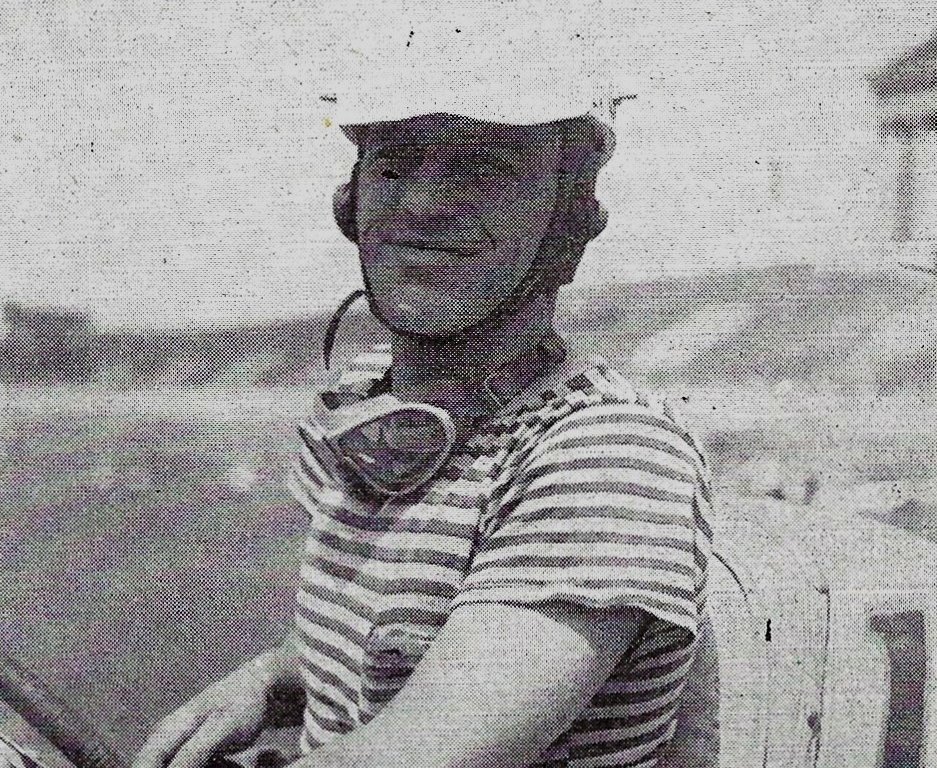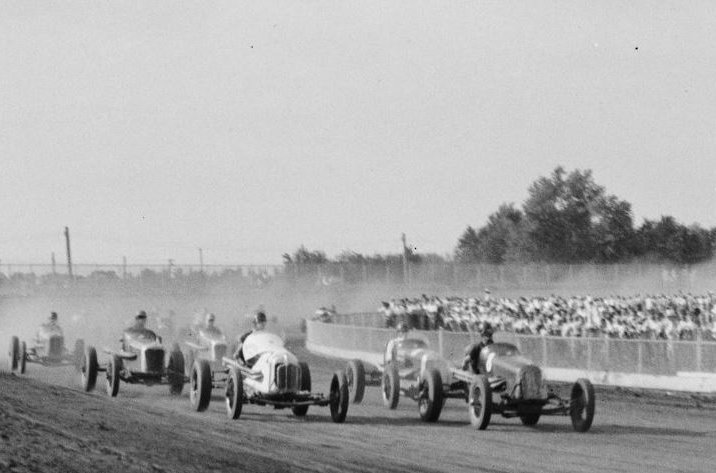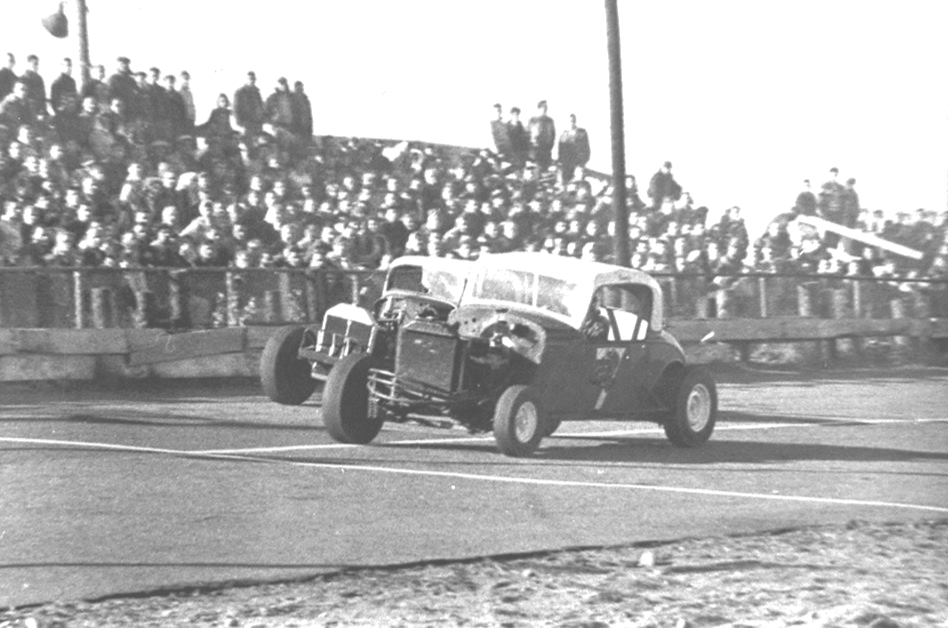Sad Ending
Auto racing is a fast and exciting sport. But it is also a very dangerous one that has ended in tragedy for many a racer throughout the history of the sport.
 Darryl Moran, CC BY-SA 2.0, Wikimedia Commons
Darryl Moran, CC BY-SA 2.0, Wikimedia Commons
Attilio Caffaratti (1900)
It was the first ever motorsport fatality in Italy and it occurred on September 10, 1900 at the Coppa Florio car and motorcycle race in the Circuito di Brescia. 22-year-old Attilio Caffaratti was riding a three-wheel Darracq-Soncin when his vehicle left the road and crashed. He was pronounced dead at the scene.
Le Mans Disaster (1955)
The most catastrophic crash in the history of motorsport happened at the 1955 24 Hours of Le Mans. It all began when Mike Hawthorn started slowing down for a pit stop. He pulled in front of Lance Macklin—who then swerved to avoid the slowed car in front of him, but in doing so, landed right in the path of Pierre Levegh. Levegh crashed into the rear of Macklin's car and went flying into the air—hitting a berm and careening into a crowd of spectators.
 Unknown Artist, Wikimedia Commons
Unknown Artist, Wikimedia Commons
Le Mans Disaster (1955)
Upon hitting the area of spectators, Levegh was thrown from his car, landing back on the track. He was killed instantly but his car continued to cause tragic damage all around. Large pieces of the vehicle—from the block engine to the hood—detached from the car and flew into the crowd, while the back part of his vehicle landed on the berm and burst into flames.
Le Mans Disaster (1955)
In all, 83 spectators were killed, along with Levegh—and over 100 more were injured. The crash was so devastating that it led to motorsport bans in a number of European countries. In fact, Switzerland instituted a ban that was only lifted in 2022.
Ayrton Senna (1994)
The San Marino Grand Prix was a devastating weekend for the F1 community and fans around the world. During the race, Brazilian driving icon Ayrton Senna crashed while leading the race and died soon afterward. But that wasn't the first death that weekend
 Instituto Ayrton Senna, CC BY 2.0, Wikimedia Commons
Instituto Ayrton Senna, CC BY 2.0, Wikimedia Commons
Roland Ratzenberger (1994)
During the previous day's qualifying run—Austrian driver Roland Ratzenberger had crashed into a wall and died as well. Senna had brought an Austrian flag in his car during the race, with plans to wave it after the race in honor of the fallen Ratzenberger.
 Sgozzi, CC BY-SA 3.0, Wikimedia Commons
Sgozzi, CC BY-SA 3.0, Wikimedia Commons
Alfonso De Portago (1957)
The Mille Miglia was an open-road race that took place 24 times in Italy—the last time being the tragic 1957 race that took the lives of Alfonso de Portago and his co-driver when a tire blew on his Ferrari 335 S.
 Unknown Artist, Wikimedia Commons
Unknown Artist, Wikimedia Commons
Alfonso De Portago (1957)
Portago was going about 150 mph when the tire blew. The car veered across a canal and took the lives of nine spectators as well (including five children).
 J Wiktorsson, Wikimedia Commons
J Wiktorsson, Wikimedia Commons
Dale Earnhardt (2001)
It was the final lap of the 2001 Daytona 500 when the great Dale Earnhardt made contact with two other cars, causing him to crash into a retaining wall. He was pronounced dead at the hospital.
Bill Vukovich (1955)
Considered by many to be one of the greatest American motorsport drivers to ever get behind a wheel, Bill Vukovich is the only former winner of the Indianapolis 500 to have been killed while leading the race. It happened in 1955 on the 57th lap, when three slower cars in front of Vukovich created a chain-reaction of collisions that led to Vukovich's car flying over a wall, onto a couple parked cars, and bursting into flames.
 Los Angeles Daily News, Wikimedia Commons
Los Angeles Daily News, Wikimedia Commons
Frank Galvin (1916)
During a race at Uniontown Speedway in Pennsylvania in 1916, Frank Galvin crashed, according to newspaper reports at the time, into the press box. Two spectators were killed and Galvin passed on in the hospital a couple days later.
 Marvin Dement Boland, Wikimedia Commons
Marvin Dement Boland, Wikimedia Commons
Justin Owen (2023)
Justin Owen was the reigning champion of the Lawrenceburg Speedway when he arrived ready to drive in the 2023 USAC's AMSOIL Sprint Car National Championship event. But Owen would never get the chance to repeat. During a qualifying run, he drifted high in a turn, lost control, and crashed into the wall. After flipping a few times, his car came to a stop on the track. His passing was announced later that day.
 TaurusEmerald, CC BY-SA 4.0, Wikimedia Commons
TaurusEmerald, CC BY-SA 4.0, Wikimedia Commons
Bill Schindler (1952)
Bill Schindler was leading a sprint car race in Pennsylvania in 1952 when one of the other drivers lost a tire. Tragically, Schindler did not see the "go slow" sign being waved and he hit the tire that was lying on the track—sending his car through a fence and down a 20-foot ridge.
 Chicago Auto Racing Association, Wikimedia Commons
Chicago Auto Racing Association, Wikimedia Commons
Giuseppe Campari (1933)
The morning of September 10, 1933 saw the Italian Grand Prix run without a hitch. However, the Monza Grand Prix—run later that day—would be filled with tragedy. It started with Giuseppe Campari, who slid on a patch of oil, crashed into a tree, and was killed instantly.
 Agence de presse Meurisse, Wikimedia Commons
Agence de presse Meurisse, Wikimedia Commons
Baconin Borzacchini (1933)
Campri's teammate, Baconin Borzacchini, also hit the oil and rolled his car. He perished at the hospital.
Count Stanislas Czaykowski (1933)
Following those two tragedies, race officials restarted the event and it was then that driver Count Stanislas Czaykowski blew an engine and caught fire. He was burned to death.
 National Library of France, Picryl
National Library of France, Picryl
Marcel Renault (1903)
In 1903, Marcel Renault was driving a Renault (of course) in a Paris to Madrid marathon race when one of his wheels got stuck in a rut and he crashed into a tree. He was 31 years old.
 La Vie au Grand Air, Wikimedia Commons
La Vie au Grand Air, Wikimedia Commons
Percy E Lambert (1913)
Percy E Lambert was the first person to ever drive a car at 100 mph. He loved speed and when his record was taken from him, he was determined to regain it. However, during his attempt at a new land speed record in 1913, his tire disintegrated and the car flipped over. He passed away on the way to the hospital.
Gaston Chevrolet (1920)
Brother of Louis Chevrolet (the guy who founded the car company), Gaston won both the Indianapolis 500 and the American National Championship in 1920. However, it was in the last race of that 1920 season, at the Beverly Hills Speedway, that Chevrolet suffered a fatal crash in lap 146 when he collided with another driver—Eddie O'Donnell. Both men perished from their injuries.
 Marvin Dement Boland, Wikimedia Commons
Marvin Dement Boland, Wikimedia Commons
Dario Resta (1924)
Dario Resta won the Indianapolis 500 in 1916. Eight years later, he was trying to set a new land speed record when a belt on the car broke, punctured his tire, and sent his vehicle through a fence where it caught on fire.
 Bain News Service, Wikimedia Commons
Bain News Service, Wikimedia Commons
Norbert Wylie (1924)
One of the most tragic things about Norbert Wylie's death was that it happened after the race was over. The event was the Dreamland Derby in Chicago in 1924 and Wylie—having just won a preliminary event—was taking a victory lap, when some fans ran on the track to congratulate him. Wylie swerved to not hit them, but he was going about 70 mph and he lost control of his car. He fatally struck one fan and when his car flipped, Wylie was thrown into the air. He died from his injuries.
Louis Zborowski (1924)
British driver Louis Zborowski was driving for Mercedes at the 1924 Italian Grand Prix when his car hit a curb and flipped over twice.
Pietro Bordino (1928)
Pietro Bordino's tragic end came during practice for a race in Italy when he hit a dog—which sent his car into a nearby river. Pietro Bordino drowned.
 Agence de presse Meurisse, Wikimedia Commons
Agence de presse Meurisse, Wikimedia Commons
Emilio Materassi (1928)
On the 17th lap of the 1928 Italian Grand Prix, Emilio Materassi was trying to pass another car when he swerved and jumped his car over a protection ditch and a fence, right into the grandstand. Materassi and over 20 spectators were killed.
 Unknown Artist, Wikimedia Commons
Unknown Artist, Wikimedia Commons
Cayetano D'Amico (1931)
It was the 11th lap of the 31-lap Gran Premio de Arrecifes—held on a public roads course in Argentina—when a spectator tried to cross the road. Cayetano D'Amico couldn't avoid the man and he hit him—killing the spectator and sending his car rolling over the fence. His co-driver died at the hospital—and while D'Amico's injuries didn't seem life-threatening at first, his health deteriorated quickly and he died a couple days later.
 Pascual Marín, CC BY-SA 3.0, Wikimedia Commons
Pascual Marín, CC BY-SA 3.0, Wikimedia Commons
Howard "Speed" Adams (1932)
Racing on a dirt track at the Tennessee State Fairgrounds in 1932, Adams was blinded by dust, causing him to run into the car of fellow driver Sherman "Red" Campbell. The two cars locked up, separated, and then collided into each other again. Adams was thrown from the car and died instantly. Campbell—who was also thrown from his car—drove in the next race. That wasn't the only time dust was the catalyst for tragedy either.
Leslie Rabik (1940)
Leslie Rabik was racing stock cars at the Hawkeye Downs Speedway in 1940 when he too was blinded by dust. Rabik lost control and crashed through a fence—and a sharp piece of fence ended up severing his jugular.
Gus Ianacone (1934)
During a qualifying race at the Woodbridge Speedway, Gus Ianacone spun out, hit a guardrail and was hit by another car. Ianacone was thrown from his vehicle and was run over by another car.
Brooklyn Horan (2024)
15-year-old Brooklyn Horan and his co-driver, 35-year-old Tyson Jemmett, both lost their lives at a rally car event in New Zealand in February 2024, when their vehicle crashed into a river.
 EKSRX, CC BY 2.0, Wikimedia Commons
EKSRX, CC BY 2.0, Wikimedia Commons
Elliott Zborowski (1903)
British driver Elliott Zborowski was slain during the La Turbie hill climb when he crashed his Mercedes. His riding mechanic, Baron de Pallange, was thrown from the car but survived.
Bobby Baird (1953)
Baird rolled his car at the Snetterton Motor Racing Circuit in 1953. At first, he may have seemed ok—as he was able to walk back to the pits. However, a cracked rib had punctured his lung and he collapsed upon arriving back at the pits.
Anita Board (2017)
Australian Anita Board had just turned eight years old two days prior—and was doing her first solo run in an attempt to get her racing license (eight is the minimum age to participate). She had gotten her dragster up to about 86 kph (54 mph), but upon crossing the finish line she wasn't slowing down enough to safely exit the course...
 GSenkow, CC BY-SA 3.0, Wikimedia Commons
GSenkow, CC BY-SA 3.0, Wikimedia Commons
Anita Board (2017)
She had been taught, in those situations, to just continue straight ahead and give yourself more track to slow down. A track official came on to the track and signaled to her to slow down, but it looked to many like he also could've been signaling her towards the exit gate. So, "doing what an adult told her to do", Board turned sharply at the last minute to exit and crashed into the barrier.
Junior drag racing was banned in Western Australia following the tragedy.





















